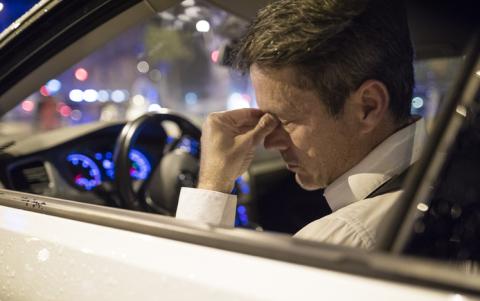November 4 – 11, 2018 Is Drowsy Driving Prevention Week
Whatever the cause of their sleepiness, experts report that “drowsy driving” is a major problem across the U.S. The National Highway Traffic Safety Administration estimates that drowsy driving is responsible for over 83,000 crashes each year; the American Academy of Sleep Medicine (AASM) puts that number at 109,000, including 64,000 fatalities.
Many experts believe these numbers are low, because when the exact cause of a crash is unknown, it’s a good bet that the driver nodded off behind the wheel. Some researchers have used dashboard cams to study the problem. According to Brian Tefft of the AAA Foundation for Traffic Safety, driving with fewer than four hours of good-quality sleep puts us at the same risk as a driver whose blood alcohol concentration is 1.5 times the legal limit!
Even if a sleepy driver remains awake, drowsiness impairs judgment and makes it hard to pay attention to the road. Says Tefft, “Being awake isn’t the same as being alert. Falling asleep isn’t the only risk. Even if they manage to stay awake, sleep-deprived drivers are still at increased risk of making mistakes—like failing to notice something important, or misjudging a gap in traffic—which can have tragic consequences.”
What causes drowsy driving?
Even under the legal limit, consuming alcohol can make us sleepy. Sleep disorders, certain medications, or sleeping fewer than the recommended seven or eight hours also can cause sleepiness to a degree that we’re unsafe behind the wheel. People who must drive a long way without proper sleep, such as truck drivers, are likely to find themselves nodding off on the road. And the AASM reports that people who work at night are especially at risk while driving home after their shift.
The Centers for Disease Control and Prevention (CDC) says drivers should be aware of the signs of drowsy driving:
- yawning and blinking frequently
- nodding off
- drifting from your lane
- hitting rumble strips on the side of the highway
- realizing you can’t remember the last few miles you’ve driven
Change drivers, or pull over and take a nap if you notice these signs. What about rolling down a window or turning on the radio? The AASM cautions that neither are effective ways of keeping a driver awake. They suggest that drivers avoid driving between midnight and 6 a.m. There is one type of “drinking and driving” that might help: the National Sleep Foundation (NSF) says that caffeine many improve alertness for several hours.
A note about ridesharing: More seniors these days are taking advantage of services such as Uber and Lyft. Earlier this year, the AASM warned that ridesharing drivers may be subject to fatigue and sleepiness. The top companies require their drivers to take a break of six hours after driving for 14 hours, but the AASM warns that this is insufficient. Be alert to signs that your driver may be impaired, such as nodding off, drifting into another lane or yawning. End the ride if you are concerned—better safe than sorry!
